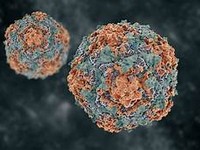
CIRCULATORY DISORDERS
FOODS THAT HEAL
FOODS TO LIMIT
WHO’S AFFECTED
Some common disorders include aneurysms, intermittent claudication, phlebitis, and Raynaud’s disease
Aneurysms are balloon-like bulges that form in weakened segments of the arteries, especially the aorta, the body’s largest artery, which stems directly from the heart
Many aneurysms are due to a congenital weakness, while others are caused by atherosclerosis and high blood pressure
Intermittent claudication symptoms include severe leg pain and cramps induced by walking
A lack of oxygen due to inadequate blood flow causes the pain
Intermittent claudication is common in those who have diabetes or atherosclerosis
Phlebitis refers to any inflammation of a vein; the large, superficial veins in the lower legs are the most commonly afflicted
Although painful, superficial phlebitis is not as dangerous as when veins located deeper in the legs become inflamed, setting the stage for thrombophlebitis
In this condition, clots form at the site of inflammation and pieces may break away and travel to the heart and lungs
Raynaud’s disease is characterized by periods of numbness, tingling, and pain in the fingers and toes due to constriction or spasms in the small arteries that carry blood to the extremities
Typically, Raynaud’s disease is set off by exposure to the cold; in some people, stress may trigger attacks
For unknown reasons, women are nine times more likely to suffer from Raynaud’s
Smoking is blamed in many cases
Some victims may also have lupus, rheumatoid arthritis, or other inflammatory autoimmune disorders
20% of people with Raynaud’s disease seek treatment
Nutrition Connection
There are no specific dietary treatments for circulatory disordersHowever, these measures may help people manage their conditions and improve their general well-being
Adopt a low-fat, low-salt diet
Following a low-fat, low-salt diet can help prevent circulatory disorders caused by atherosclerosis and high blood pressure, especially in aneurysms
Eat fresh fruits and vegetables
Consuming ample amounts will provide the vitamin C needed to strengthen and maintain blood vessels
Include more onions and garlic
These vegetables are especially helpful in improving blood flow
After chopping garlic, let it rest for 10 minutes prior to cooking it
This will allow the allicin and its potent derivatives to be activated and unleash the full nutritional power of garlic
Add more fish
A diet that includes several servings a week of fatty fish or other sources of omega-3 fatty acids, as well as foods high in vitamin E, helps reduce inflammation and clot formation
Gamma linolenic acid, a substance in evening primrose and borage oils, has a similar effect, but check with your doctor first, as these may interact with prescribed drugs
Beyond the Diet
Combined with a balanced diet, taking the following steps can support your overall health and prevent aggravating circulatory problems further: ExerciseAn exercise program coupled with a very low-fat diet, such as the regimen championed by cardiologist Dr
Dean Ornish, can help those with circulation problems
Avoid smoke
Don’t smoke, and try your best to avoid secondhand smoke
Try warm compresses
For those with Raynaud’s disease, applying warm compresses to hands and feet, or avoiding exposure to cold temperatures can prevent or minimize attacks
Medicate as needed
Phlebitis can be treated with aspirin and other anti-inflammatory drugs
Clot-dissolving drugs may be administered for thrombophlebitis; other measures may be required to prevent clots from reaching vital organs
Talk to your doctor
People with severe blockages may require surgery to remove them
Importance of well balance diet




